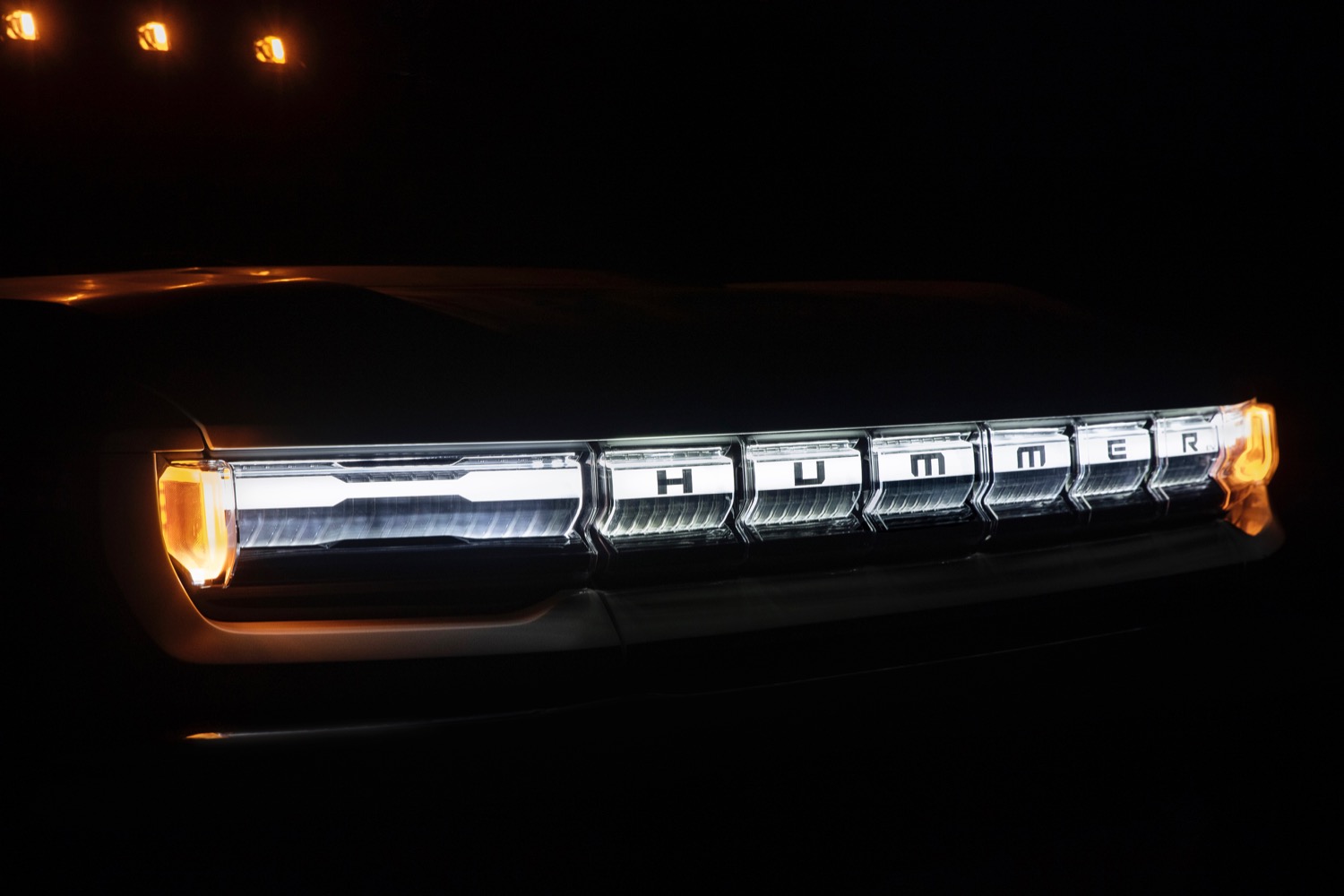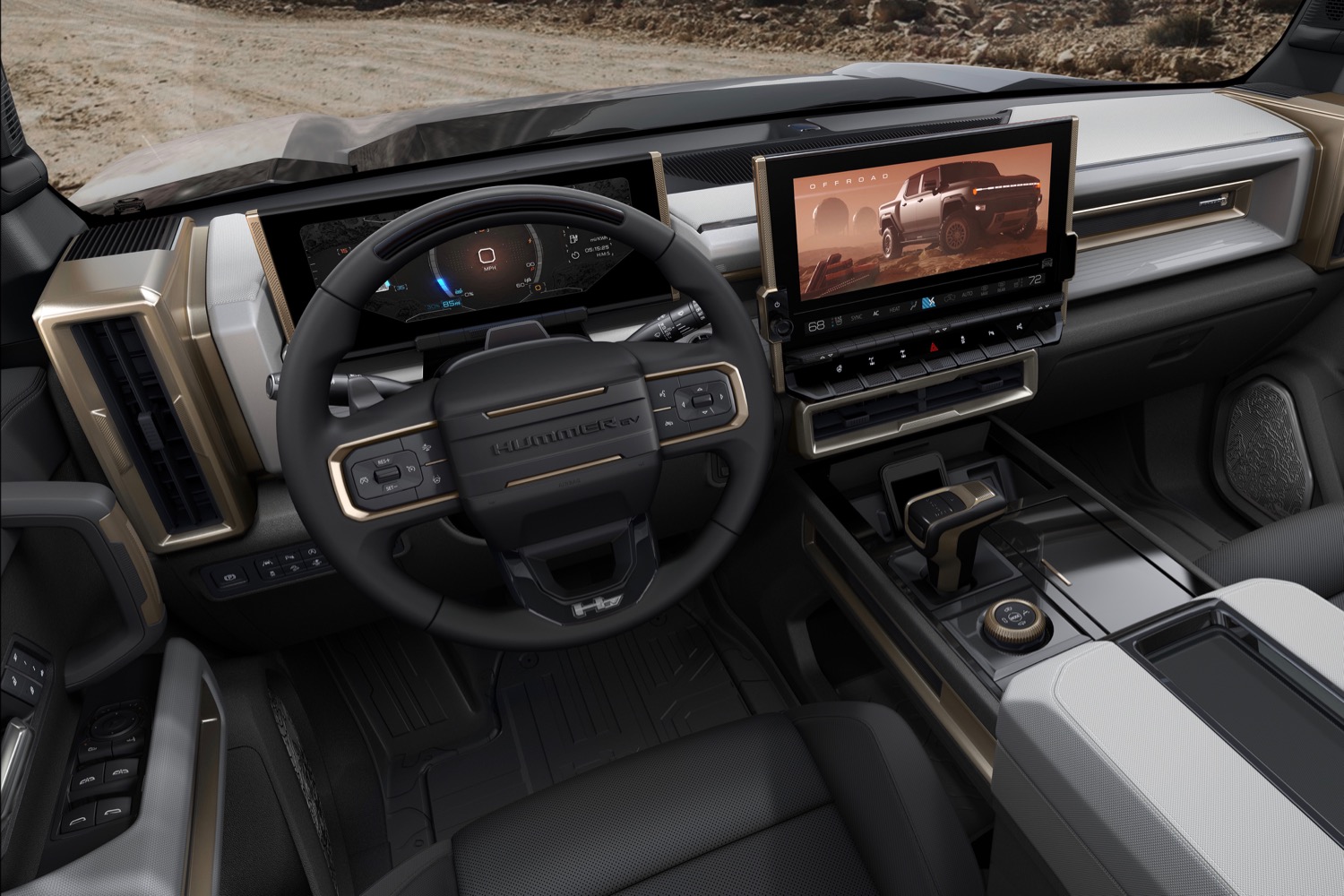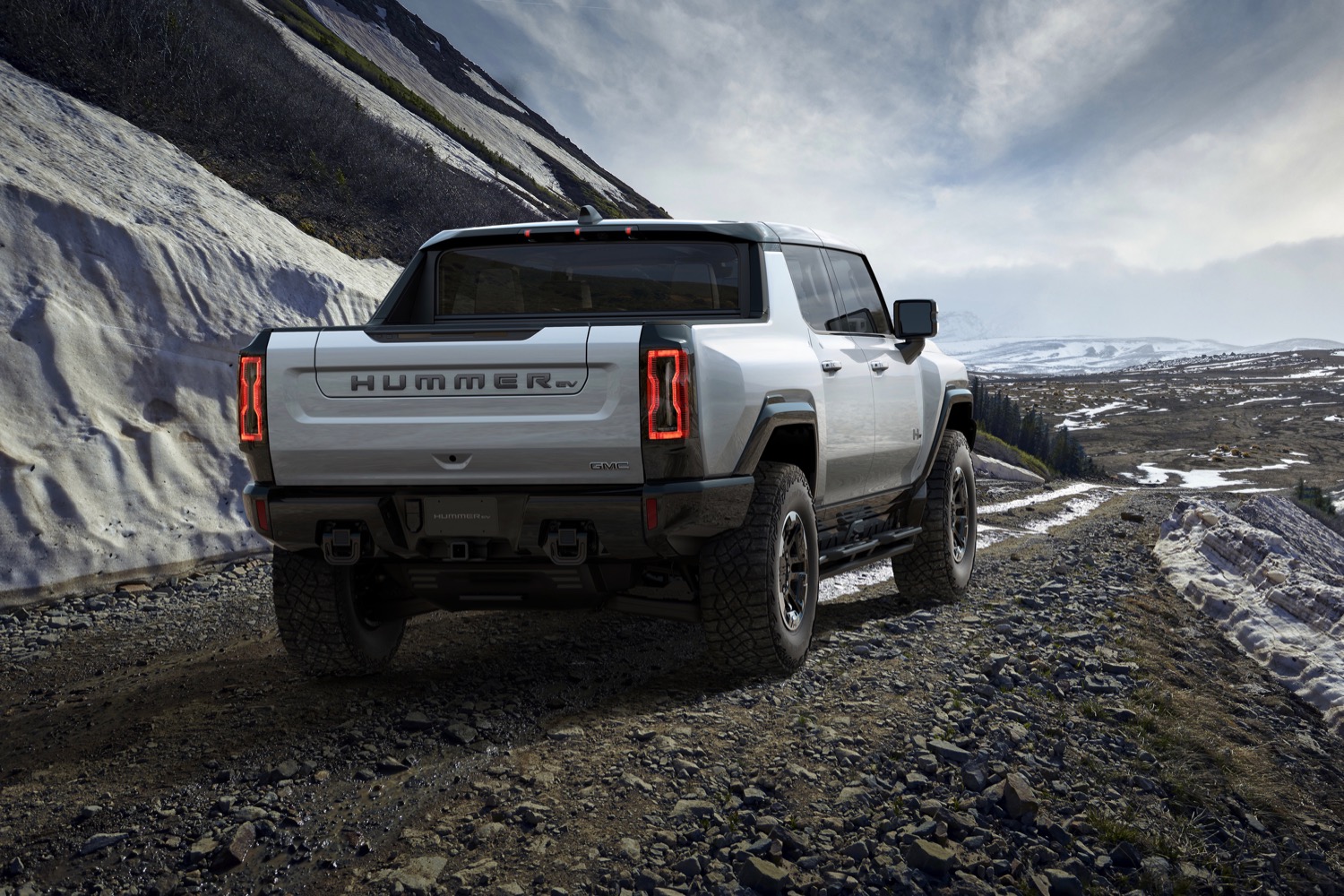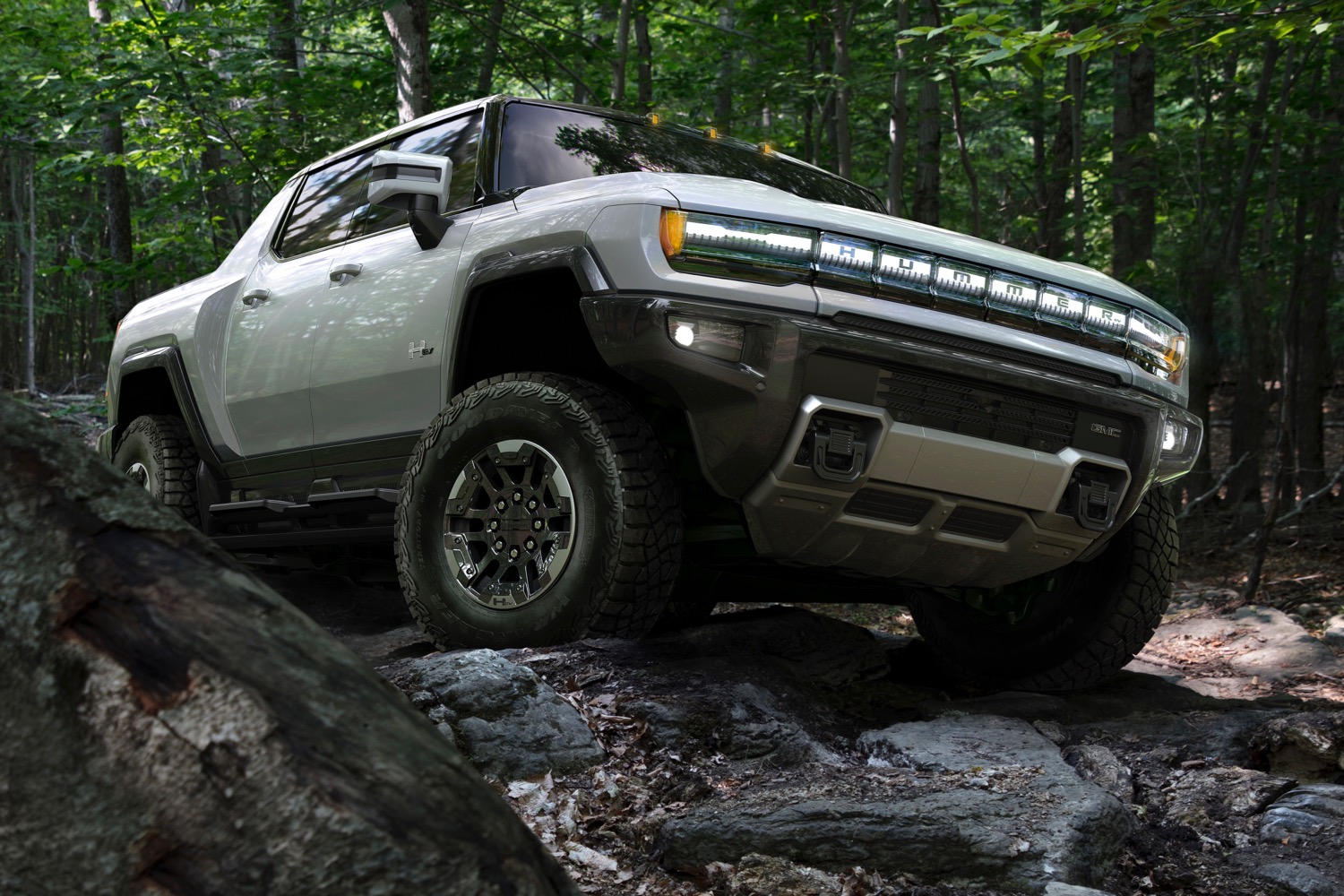After months of coronavirus-related delays, Hummer is back. Only this time, it’s electric.
Announced in February, and originally scheduled to be revealed in May, the 2022 GMC Hummer EV is an electric pickup truck that revives the Hummer name, last produced for a civilian vehicle about a decade ago. Part of an onslaught of new electric models by General Motors, the Hummer EV is scheduled to start production in 2021, meaning it will reach showrooms as a 2022 model.
Design
While the Hummer EV launches as an individual model for the GMC brand, Hummer was originally a separate GM brand with multiple models of its own. Hummer started out making civilian versions of the military Humvee, before moving on to more mainstream models based on ordinary GM platforms. Hummers had a well-deserved reputation as gas guzzlers, which led to the brand’s demise in the wake of the 2008 recession, and makes the revival of Hummer with an electric vehicle deliciously ironic.
The 2022 GMC Hummer EV is a four-door pickup with a short-looking bed, a bit like the old Hummer H2 SUT model. It reimagines the H2’s chrome grille as an illuminated strip and adds what GMC calls an “Infinity Roof,” with four removable transparent panels for a convertible-like level of open space.
At the front, the Hummer EV gets the now-obligatory EV frunk, while at the back it sports the six-position MultiPro tailgate first seen on the GMC Sierra pickup. However, it doesn’t appear that GMC has developed any clever storage cubbies and pass-throughs, as Bollinger and Rivian have done with their electric trucks.
Designed for off-roading, the Hummer EV gets standard 35-inch Goodyear Wrangler Territory MT tires, but it can accommodate tires up to 37 inches in diameter, according to GMC. Strategically-placed steel plates protect the battery pack from being bashed by rocks, and rock sliders do the same for the bodywork.
Tech
The standard infotainment setup includes a 13.4-inch central touchscreen, while a 12.3-inch screen takes the place of the traditional instrument cluster. As on most other GMC models, expect Apple CarPlay and Android Auto to be standard. The screens can also be customized with widgets that show everything from tire pressure to pitch and roll angles.
The Hummer EV also gets the Super Cruise driver-assist system previously seen only in Cadillac luxury models. Super Cruise is essentially a rival to Tesla Autopilot, allowing the car to automatically steer, brake, and accelerate on highways, as well as execute lane changes.
Unlike Autopilot, however, Super Cruise uses a driver-facing camera to guard against distraction and only works on specific stretches of road that have been well mapped. With 200,000 miles mapped so far, according to GMC, you’ll still have plenty of places to go. It’s also a true hands-off system, unlike Autopilot.
To make the truck more maneuverable on off-road trails (and presumably in tight parking lots as well), the Hummer EV is equipped with four-wheel steering. It’s not the first production vehicle with four-wheel steering (GMC even offered it on some trucks in the early 2000s), but it is the first with CrabWalk—allowing the truck to drive diagonally at low speeds.
GMC will offer up to 18 cameras—including front and rear underbody cameras—that can help the driver spot obstacles and place the vehicle precisely while off-roading. GMC isn’t the first automaker to call its camera system a “virtual spotter,” but we’ll have to get some trail time to see if these systems can really replace a second pair of human eyes.
Specifications
GMC’s three-motor all-wheel-drive system produces a titanic 1,000 horsepower and 11,500 pound-feet of torque. Using launch control (or “Watts for Freedom,” as GMC calls it), you can hustle a Hummer EV from zero to 60 mph in approximately 3.0 seconds, the automaker claims. That’s quicker than an Aston Martin Vantage or a Porsche 911 Carrera 4S.
The Hummer EV uses GM’s new Ultium modular battery system. The pickup truck gets 24 battery modules in a double-stacked arrangement, but GMC didn’t list total capacity. It did say the Hummer EV will have up to 350 miles of range, and 800-volt, 350-kilowatt, DC fast charging that can recover 100 miles of range after 10 minutes of charging.
The truck rides on adaptive air suspension, which includes an “Extract Mode” that can lift the Hummer EV up to 6.0 inches to clear boulders or ford water.
Rivals
When it starts production in late 2021 at GM’s newly rechristened “Factory Zero” EV plant in Detroit, the 2022 GMC Hummer EV will have plenty of competition. With a $112,595 price tag at launch, though, the Hummer will likely be priced above most of those competitors. Cheaper variants will join the range later in the production run.
The Tesla Cybertruck boasts a similar combination of utility and sports-car-like performance, but with futuristic styling to boot. Tesla has said its first pickup truck should start production in late 2021, but the factory hasn’t even been built yet.
The Rivian R1T boasts a claimed 400-mile range and clever packaging. Like the Hummer EV, it also appears to be more of a lifestyle accessory than a work vehicle. Rivian will build the R1T at a former Mitsubishi factory in Illinois and plans to start deliveries in mid-2021.
The Bollinger B2 is designed for the Class 3 category that normally includes work-oriented heavy-duty trucks, but that may be just a way of simplifying the regulatory approval process. Bollinger’s back-to-basics truck has 614 hp, is designed for serious off-roading, and may be the most expensive truck of the group, with a $125,000 base price.
Ford is also taking electric trucks seriously. It plans to launch an electric version of its bestselling F-150 sometime in the next few years. Little is known about the electric F-150, but considering the success of the internal-combustion model, it will definitely be one to watch.





